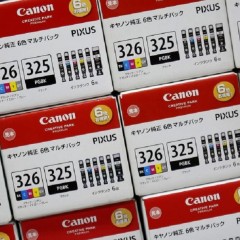Binance crypto exchange founder to step down amid US illicit finance probe
Changpeng Zhao, founder of Binance, the world’s largest cryptocurrency exchange, has stepped down as CEO and pleaded guilty to violating anti-money laundering laws. The deal with the United States Department of Justice (DoJ) is part of a larger settlement that involves several federal agencies and will include fees of more than $4bn, the DoJ said on Tuesday. The announcement is the latest blow to the cryptocurrency industry, which has been marred by a series of scandals and investigations that have unearthed fraudulent behaviour by central players and firms. Cryptocurrency has also comes under scrutiny as a tool used by illicit groups to circumvent global financial safeguards. Zhao, a Canadian national, pleaded guilty to one count of failure to maintain an effective anti-money laundering programme. “Binance became the world’s largest cryptocurrency exchange in part because of the crimes it committed. Now it is paying one of the largest corporate penalties in US history,” Attorney General Merrick Garland said. This month, Sam Bankman-Fried, the 31-year-old founder of FTX, the world’s second-largest crypto exchange, was convicted of fraud for stealing more than $10bn from customers and investors. “In just the past month, the Justice Department has successfully prosecuted the CEOs of two of the world’s largest cryptocurrency exchanges in two separate criminal cases. The message here should be clear: Using new technology to break the law does not make you a disruptor. It makes you a criminal,” Garland said. Acting US Attorney Tessa Gorman for the western district of Washington said that […]
IRS sees crypto seizures totalling billions of dollars in 2022
The Internal Revenue Service could seize cryptocurrency valued at billions of dollars that’s linked to tax fraud and other crimes in the coming year, according to a key agency official. The IRS seized $3.5 billion worth of cryptocurrencies during fiscal year 2021, a figure that accounted for 93% of all the assets seized by tax enforcement that year, according to an IRS criminal investigation annual report published Thursday. “I expect a trend of crypto seizures to continue as we move forward into fiscal year ‘22,” IRS Criminal Investigation Chief Jim Lee said on a call with reporters. “We’re seeing crypto involved in a number of our crimes as we move forward.” In the past year, the IRS’s criminal unit seized billions of dollars worth of Bitcoin and other virtual currencies, including $1 billion stolen from the Silk Road, an online Bitcoin exchange that was shut down in 2013. The unit also prosecuted a former Microsoft Corp. software developer who used cryptocurrency to hide $10 million he embezzled from the company. Congress recently granted the IRS more ability to surveil cryptocurrency transactions in the infrastructure package President Joe Biden signed into law on Monday. That law will require crypto brokers to track and report transactions to the IRS in an effort to give tax authorities more visibility into virtual currency trades. The agency could also benefit from an additional $80 billion in funding that Democrats are proposing in Biden’s Build Back Better plan, which could get a vote in the House as soon […]
5 ways to stop wasting printer ink and money
Quick: What’s the most expensive liquid you have in your house right now? If you’re thinking wine, gasoline or perfume, think again. Your printer ink is way, way, way more expensive. Printer ink can range from $13 to $75 an ounce. To bring that home, you could buy more than 2,000 gallons of gas for the cost of a gallon of ink. With that in mind, I’m betting you’ll cringe when I tell you that your printer wastes ink every day – I know I don’t like to think about it. Here’s how that waste happens: Very small amounts of ink evaporate inside the cartridge and through the print heads Some ink sticks to the cartridge and will never find its way to paper Most ink loss happens when your printer automatically performs maintenance on the print heads You can hear this maintenance happening whenever you turn on your printer. That loud sound is your printer shooting tiny jets of ink through the head to clean out dried ink and get ready for the new job. Unfortunately, there isn’t much you can do about that. Consumer Reports found some printers waste more ink than others – Brother printers don’t use much ink and HP’s Envy printers are decent, but the HP Photosmart models tends to be ink hogs, for example. Of course, printer models come and go regularly and keeping track of ink hogs is tough. Consumer Reports also found that ink cartridges vary wildly with how much they hold […]
New Chrome extension can pinpoint your Facebook Messenger locations
Stalkers are likely in for a treat as a new app is going to help them creep up on their Facebook friends. As if Google wasn’t enough. A new Google Chrome extension called Marauders Map, inspired by the map in the Harry Potter franchise, will allow users to see exactly from where their contacts are messaging them, without their permission or consent. Created by a student developer in Cambridge, Massachusetts, Aran Khanna, the extension will grab a user’s location data from Facebook Messenger and will quickly plot it out on a map. The location is said to be extremely precise and makes it super easy to stalk a person’s vicinity. To make things more easy, it can fetch location data from the past as well as long as location sharing was enabled, which is mostly on by default on iOS and Android apps. Aran Khanna mentioned in a blog post on Medium, “Everyone I have shown this extension to has been anywhere from surprised to appalled that this much of their very personal data is online for their friends (and even complete strangers) to access.” A report by Engadget points out that this is not real-time tracking method by any means. The extension simply compiles the embedded data into a cohesive map. Read more: New Chrome extension can pinpoint your Facebook Messenger locations
5 ways Windows 10’s new Edge browser beats Internet Explorer
Farewell, Internet Explorer. Make way for Microsoft’s next browser, Edge. Windows users may not know Edge now—in early development it was called Project Spartan—but they will soon, because it will be the default browser for Windows 10. Edge, which won’t run in older versions of Windows, is a radical break from IE, despite sporting a similar logo. “We needed to do more than produce the next version of the browser. We needed a new way of doing things,” explained Charles Morris, Microsoft principal program manager lead on Edge, in a presentation at the Microsoft Build conference last week in San Francisco. Here are five ways in which Edge promises to be a superior browser to the IE warhorse. 1. No legacy support (mostly) Around since the dawn of the Web, IE carries a great amount of baggage in the name of backward compatibility. IE 11 comes with a variety of legacy modes, mostly to support enterprises who built internal applications around IE6 or some other older version. The company needed to make a clean break, especially given how quickly Mozilla, Google and Apple were updating their own browsers with little worry about supporting older, outdated technologies. “It wasn’t a fair game,” said David Catuhe, Microsoft principal program manager, in another Build talk on Edge. Edge will not support Microsoft’s ActiveX, Browsers Helper Objects (BHOS), VBScript and third-party toolbars built for IE11, all of which could crimp performance and bring security woes. It will support Adobe Flash and Personal Document Format […]
A new, cheap battery that charges in a minute could be the future of cell phones
Scientists at Stanford University have created a battery that in the future could be a workhorse of consumer electronics such as smartphones. The battery, which is made from aluminum and graphite, is flexible, safe, cheap, and fast-charging—prototypes created by the scientists can charge from empty to full in the span of one minute. Results of the researchers’ work was published online April 6 in Nature. One day, such batteries could pair with flexible screens to power phones that can be folded and charge in a fraction of the time of devices today. Today, the state of the art in consumer electronic batteries are lithium-ion. But Hongjie Dai, a Stanford chemistry professor who is one of the new study’s authors, said that lithium-ion batteries can be volatile, sometimes presenting a fire hazard; the new aluminum-ion batteries avoid that risk. They may also have a longer lifespan. Typical lithium-ion batteries can be recharged roughly 1,000 times without losing capacity. While previous aluminum-ion batteries weakened after just 100 or so charges, the battery created by the Stanford researchers didn’t lose capacity even after 7,500 charge cycles. That longevity, combined with the safety of the battery, could one day make it a candidate for energy storage on the electric grid. It’s important to note that although this is an impressive piece of research, the battery isn’t ready to unseat the lithium-ion variety yet. It only packs about half the voltage (which means you would need more of them to power a device than a […]












